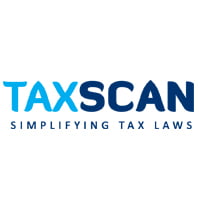Only Investments Yielding Exempt Income Can Be Considered Under Section 14A: ITAT Dismisses Revenue’s Appeal Against Assessee [Read Order]
Tribunal held that the AO cannot mechanically apply Rule 8D without examining whether the investments actually yielded exempt income
![Only Investments Yielding Exempt Income Can Be Considered Under Section 14A: ITAT Dismisses Revenue’s Appeal Against Assessee [Read Order] Only Investments Yielding Exempt Income Can Be Considered Under Section 14A: ITAT Dismisses Revenue’s Appeal Against Assessee [Read Order]](https://images.taxscan.in/h-upload/2025/07/31/2071413-investments-yielding-exempt-income-considered-under-section-14a-itat-dismisses-revenues-appeal-against-assessee-taxscan.webp)
The Kolkata Bench of the Income Tax Appellate Tribunal (ITAT) recently upheld the order of the Commissioner ofIncome Tax (Appeals) [CIT(A)], bringing clarity to the contentious issue of disallowance under Section 14A read with Rule 8D of the Income Tax Rules. The appeal, filed by the Department against Aryan Mining and Trading Corporation Limited, challenged the CIT(A)’s direction to restrict disallowance only to investments that actually yielded exempt income during the relevant financial year.
Aryan Mining and Trading Corporation Limited filed its return of income for the Assessment Year (AY) 2015–16 declaring ₹20.32 crore as total income. The return was selected for limited scrutiny under the Centralized Scrutiny Selection System (CASS), and the assessment was completed under Section 143(3) of the Income Tax Act. During assessment, the Assessing Officer (AO) made two major disallowances, ₹46.36 lakh on account of Corporate Social Responsibility (CSR) expenditure, and ₹6.07 crore under Section 14A read with Rule 8D for investments purportedly made to earn exempt income.
Aggrieved by the disallowance under Section 14A, the assessee filed an appeal before the CIT(A), who partly allowed the appeal by directing the AO to recompute the disallowance only on investments that actually yielded exempt income.
The Department, in its appeal before the ITAT, argued that Section 14A applies regardless of whether exempt income was earned during the year. Circular No. 5/2014 from CBDT clarifies that disallowance under Section 14A is triggered by the “includibility” of income and not by its actual earning. Clause (f) of Explanation 1 to Section 115JB mandates an increase in book profits for disallowable expenses under Section 14A even while computing Minimum Alternate Tax (MAT).
On the other hand, the assessee asserted that, only ₹31.5 lakh of exempt income was earned during the year, primarily from tax-free bonds. It was usbmitted that the AO erroneously considered the entire investment corpus, including those which did not yield any exempt income. The investments in group companies were strategic and not meant for earning exempt income, and therefore could not be subjected to disallowance under Rule 8D. The CIT(A)’s direction to restrict disallowance to investments that yielded exempt income was in line with the decisions of the coordinate benches in the assessee’s own earlier cases.
After hearing both sides, the ITAT bench comprising Pradip Kumar Choubey (Judicial Member) and Rakesh Mishra (Accountant Member) sided with the assessee and upheld the order of the CIT(A). The Tribunal observed that the AO had mechanically applied Rule 8D without examining whether the investments actually yielded exempt income. As per established law, including the judgment in REI Agro Ltd. vs DCIT and its affirmation by the Calcutta HighCourt, only those investments which generate exempt income in the relevant financial year can be considered for disallowance under Rule 8D. Investments in subsidiaries and group companies made for strategic business purposes are not hit by Section 14A.
On the issue of adding disallowance under Section 14A to book profits under Section 115JB, the Tribunal relied on the Supreme Court’s decision in Apollo Tyres Ltd. v. CIT and ruled that notional disallowances such as those under Rule 8D cannot be factored into MAT calculations unless the expenditure was debited to the Profit & Loss account. The disallowance made under Rule 8D, being notional in nature, was not admissible for adjustment under MAT provisions. As a result the ITAT dismissed the Revenue’s appeal.
Support our journalism by subscribing to Taxscan premium. Follow us on Telegram for quick updates


